CHICAGO—The migration of many American companies back into our urban cores has been justly celebrated by those in the commercial real estate industry. Values and rents in once-moribund submarkets have soared, touching not just the office sector, but retail and residential as well. But even though that migration has left some big vacancies in many outlying towns, it should not obscure the resilience shown by many suburban office markets.
According to a new report from CBRE Group, Inc., after registering positive absorption for 27 consecutive quarters, the US suburban vacancy rate has nearly sunk to its pre-recession low. It now stands at 14.1%, or 450 bps below the cyclical peak in the second quarter of 2010, and just 20 bps above the previous low of 13.9% reached in 2007.
“Still, the suburbs are having a hard time shaking the perception that they’re struggling to keep up with the allure of vibrant downtowns,” says Andrea Cross, Americas head of office research, CBRE.
The suburbs of Midwest metro areas such as Chicago and Detroit have certainly seen tangible improvements. Detroit’s suburban market has been a top-performer nationwide, even though its CBD has undergone a remarkable transformation. The suburbs’ vacancy rate decreased 250 bps in 2016, trailing only five other US markets for the largest vacancy decrease in that time period, CBRE found.
In the Chicago region, companies have continued to migrate from the suburbs to the CBD. But the suburbs remain quite desirable for many class A users, and investors have taken notice. Sales volume in the suburban office market totaled $230 million first quarter, NAI Hiffman found.
As reported in GlobeSt.com, GlenStar Properties LLC recently acquired the 1.04 million square foot Schaumburg Corporate Center for $70.7 million, or $68 per square foot. The developer, which has a history of successfully bringing back underperforming properties in the submarket, plans to rehabilitate and lease up the property.
“Many suburban markets are positioned for further occupancy and rent gains due to continued demand and lack of available supply, especially newer, high-quality product,” says Cross.
BY THE NUMBERS
LOUISVILLE—The Louisville office market remained active in the first quarter with total market leasing activity increasing by 130,000 square feet over the previous quarter to 440,515 square feet, according to a CBRE report. The CBD reported 61,606 square feet of leasing activity, a slight majority in class B properties. and Class A properties. “We’re expecting an increase in net absorption over the next few quarters,” says David Hardy, managing director. Despite the positive leasing activity, the overall vacancy rate increased by 10 bps to 12.7%. Net absorption in the CBD dwindled, posting 191,862 square feet of negative net absorption, yet the suburban submarkets posted 100,805 square feet of positive net absorption. CBRE attributes the CBD absorption rate “to corporate downsizings previously announced taking effect.”
CHICAGO—The rapid growth of e-commerce fulfillment networks in recent years has resulted in a steady increase in the height and volume of warehouses and distribution centers, likely necessitating a shift to three-dimensional measurement of industrial space, according to a new research report from CBRE Group, Inc. Chicago alone added more than 43 million cubic feet of warehouse inventory from 2010-2016. The data show that 13.7 billion cubic feet of warehouse space was built in the US from 2010 to 2016, with 65% of that total coming in the 10 largest markets, led by the Inland Empire, Dallas/Fort Worth and Chicago. Measuring those newly built warehouses by ground-level floor area yields only 422.5 million square feet. “There’s an argument to be made that industrial space should be talked about on a volume basis, not an area basis, because that space above the floor is very important,” says David Egan, CBRE’s head of industrial and logistics research in the Americas.
CHICAGO—Chicago-area home sales soared in March, and home values continued to increase as well, closing the first quarter of 2017 on a positive note, RE/MAX reports. March home sales in the seven-county metropolitan area were 14.8% higher than during March 2016, with 9,556 units changing hands and the median sales price gaining 10.4% to $234,000. As a result, home sales activity in the first quarter totaled 21,584 units, 5.6% higher than last year despite a slight dip in January and February. “We expected a fairly robust early spring market, but the March results definitely surprised on the upside,” says Jack Kreider, executive vice president and regional director of the RE/MAX Northern Illinois network. “Mild winter weather certainly helped bring out buyers, as did an improving job market and the prospect of gradually rising interest rates.”
DEALTRACKER
LOMBARD, IL—Waste Management has just signed a lease renewal at 700-720 E. Butterfield Rd. in suburban Lombard. NAI Hiffman executive vice president Michael Van Zandt, and vice president, Brian Edgerton, represented the landlord, St. Paul Fire & Marine, in the 86,110-square-foot office lease. Waste Management has been a tenant at Butterfield Centre since 1991. NAI Hiffman also provides leasing and management services at the two-building, 280,672-square-foot, class A office complex.
CHICAGO—Holliday Fenoglio Fowler, LP recently arranged $24 million in financing for The Hensley, an 11-story, 43-unit luxury apartment community at 707 N. Wells St. in Chicago’s River North neighborhood. Working on behalf of the borrower, Akara Partners, HFF placed the three-year, floating-rate loan with Heitman LLC. The loan refinanced existing construction financing on the property. Completed in 2016, tenants already occupy 100% of its space. The Hensley also has 5,892 square feet of ground-floor retail, which is fully leased to GT Prime, a new restaurant from the Boka Restaurant Group. The HFF debt placement team representing the developer was led by managing directors Danny Kaufman and Stephen Skok.
LANSING, MI—Marcus & Millichap has just completed the sale of One Michigan Avenue, a 10-story, 154,000-square-foot multi-tenant office building in Lansing. The roughly $16.5 million sales price equates to more than $110 per square foot. “The property is one of the largest and most prestigious multi-tenant office buildings in Lansing,” says John Godwin, senior vice president of investments in M&M’s Detroit office. “Much of the tenant roster, which includes law firms, a bank, an insurance company, and government tenants, has occupied the building for more than 10 years.” Godwin, and Richard O’Connor, senior associate, represented the seller, a Lansing-based partnership. Godwin procured the buyer, a regional investment group. At the time of the sale, One Michigan Avenue was 98% occupied.





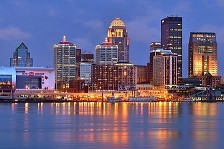
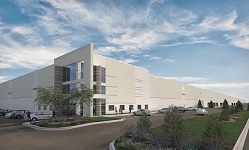
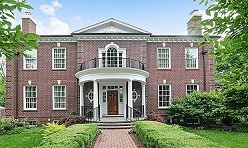
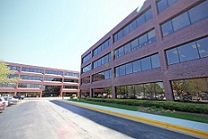
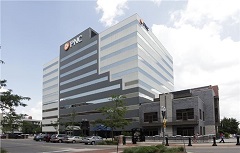












 Copyright © 2024 ALM Global, LLC. All Rights Reserved.
Copyright © 2024 ALM Global, LLC. All Rights Reserved.